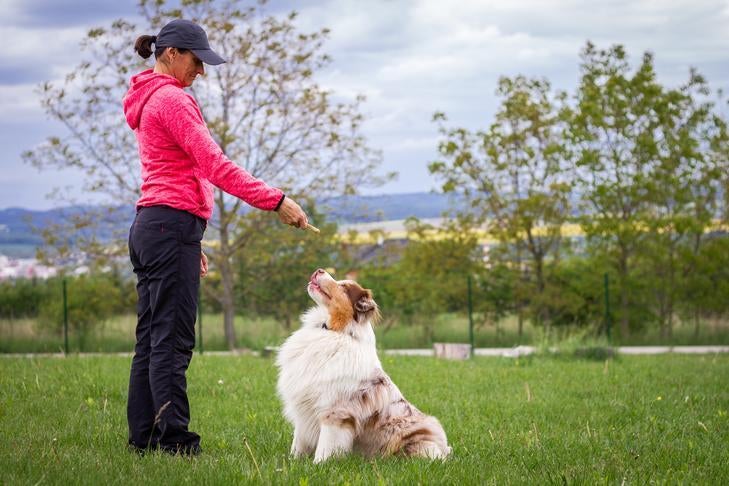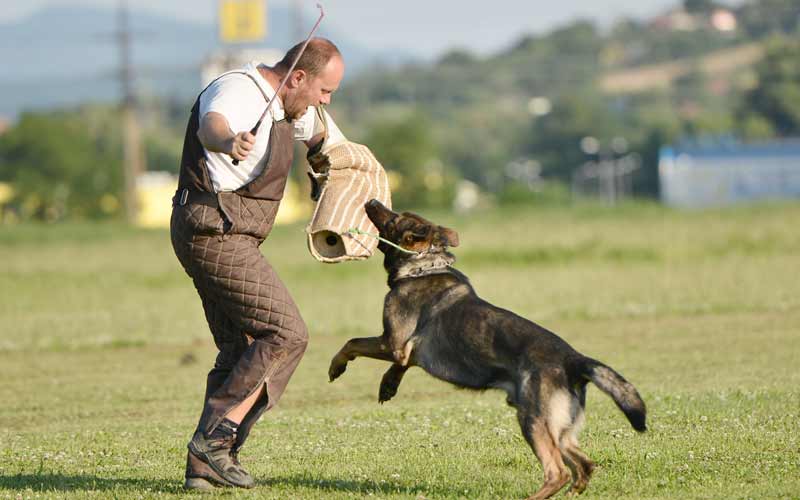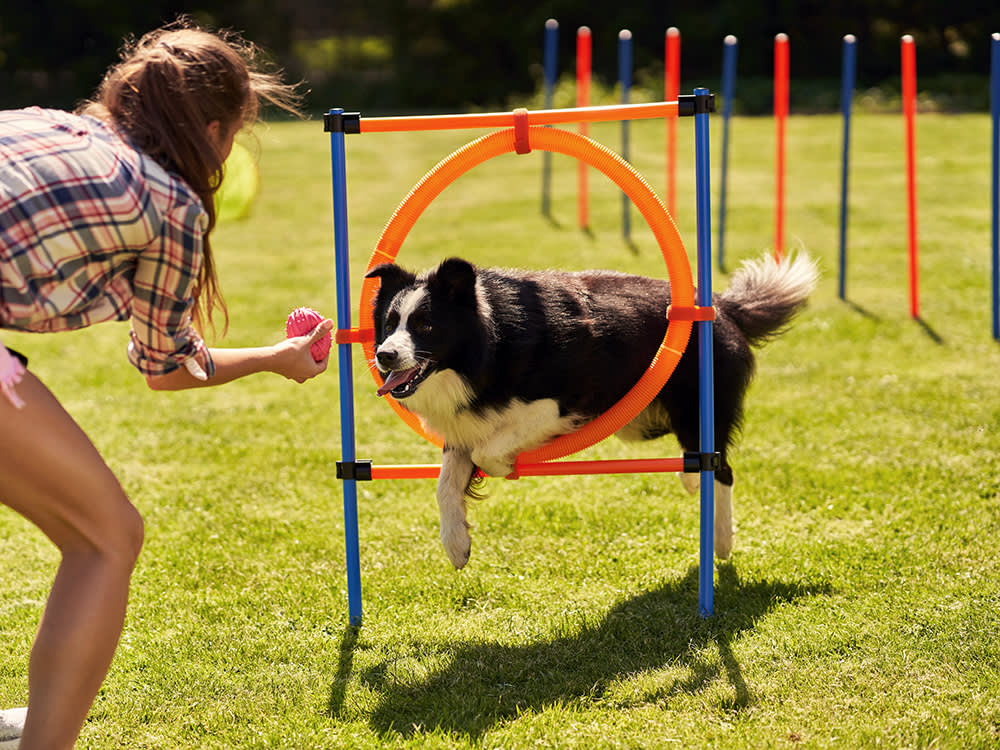Common Behavioral Issues and Their Solutions in Dog Training
Wiki Article
Vital Tips for Successful Dog Training: A Guide for Animal Owners
Efficient pet dog training is a multifaceted procedure that needs a calculated technique customized to both the pet dog's character and the owner's purposes. Comprehending just how to browse these barriers can considerably boost the training experience, ultimately transforming the connection between proprietor and canine.Understanding Canine Habits
Recognizing canine habits is necessary for efficient training and cultivating a harmonious relationship between canines and their proprietors. Canines connect mostly with body language, articulations, and actions, making it critical for owners to translate these signals accurately. Identifying a dog's pose, tail position, and ear alignment can supply insights into its mood. A wagging tail does not always suggest joy; it can also signify enjoyment or anxiousness.
Socialization plays a substantial duty in pet dog habits; exposure to numerous atmospheres, individuals, and other pets can significantly affect a pet dog's temperament. Additionally, elements such as breed features and private character should assist training techniques, as some types may have specific behavioral attributes that demand customized approaches. By understanding these aspects, owners can create an encouraging atmosphere that motivates favorable behavior, causing successful training results and a much deeper bond with their pet dogs.
Establishing Regular Commands
Efficient interaction with your canine begins with developing consistent commands. This fundamental element of training is critical for cultivating understanding between you and your pet. Consistency in the commands you make use of makes sure that your dog can accurately associate certain words or phrases with the preferred behaviors.When picking commands, select clear, distinctive words that are easy to set apart and state from one an additional. Avoid utilizing similar-sounding commands that might puzzle your pet. Making use of "sit" and "remain" is ideal, but "rest" and "hit" might lead to misconceptions.
Additionally, preserve the very same tone and volume for each command. Dogs are sensitive to singing signs, so differing your tone can produce complication.
It is similarly crucial to guarantee that all member of the family are on the same web page pertaining to the commands made use of. A united front in command use will avoid mixed signals and enhance the knowing procedure.
Positive Support Strategies
The power of favorable support in pet training lies in its ability to urge desired habits through incentives and praise. This technique is based in the concept that habits followed by favorable end results are extra most likely to be duplicated. By incorporating favorable reinforcement right into your training program, you can properly shape your dog's habits in a constructive fashion.To implement favorable reinforcement, it's important to recognize what inspires your dog, whether it be treats, playthings, or spoken appreciation. When your pet dog carries out a wanted action, such as remaining on command, immediately compensate them with a treat or love. This organization between the command and the positive outcome reinforces their understanding.
It's essential to timing the incentives correctly; providing the support within seconds of the preferred actions helps your pet dog make the link (dog training). In addition, consistency is vital-- make sure that all member of the family use the very same commands and reward systems to stay clear of complication

Slowly, you can reduce the regularity of treats as your canine finds out the actions, transitioning to praise or periodic incentives. This method not just cultivates a solid bond between you and your canine however additionally promotes a positive discovering setting, making educating a delightful experience for both.
Socialization and Interaction
Constantly revealing your dog to a variety of atmospheres, people, and other animals is important for their social advancement. Socialization needs to begin early, ideally during the vital home window of 3 to 14 weeks, when puppies are most receptive to new experiences. Older pet dogs can additionally benefit from continuous socialization efforts.Introduce your dog to various settings, such as parks, pet-friendly shops, and city locations. This direct exposure assists them adjust to different stimuli, lowering stress and anxiety and look at these guys concern actions. Urge positive interactions with various other dogs and people, ensuring that these experiences are regulated and secure to cultivate confidence.
Utilize structured playdates with courteous dogs, as this can boost your canine's social abilities and instruct them ideal habits. Obedience classes and training sessions additionally offer superb chances for socializing, permitting your pet dog to interact with others in a monitored atmosphere.
Display your dog's body language throughout interactions, as this will certainly help you determine their convenience level. Gradually boost direct exposure to more difficult scenarios while making sure that each experience is favorable. A well-socialized pet is most likely to show balanced behavior, making them a happiness to have in any setting.
Dealing With Typical Training Challenges
Every dog owner will certainly come across training challenges eventually, despite their pet's age or socializing degree. Identifying typical concerns such as stubbornness, interruptions, and terror can assist in creating effective methods for renovation.
Disturbances throughout training sessions can thwart focus. To combat this, start training in a silent environment with very little stimuli. Slowly introduce interruptions as the canine ends up being a lot more skillful in commands. Short, regular training sessions are likewise effective in maintaining attention.
Terror can impede a pet's knowing procedure. Steady desensitization to the source of worry, paired with positive support, can assist relieve anxiety. Patience is essential; never ever compel a canine into a situation that triggers distress, as this may intensify the issue.
Inevitably, understanding and addressing these usual obstacles with an organized method will certainly promote a more effective training experience, enhancing the bond in between dog and proprietor while promoting reliable learning.
Conclusion
In summary, successful pet training depends on a thorough understanding of canine actions, the establishment of regular commands, and the application of positive support techniques. Socializing plays an essential duty in establishing well-adjusted pets, while attending to common training challenges requires perseverance and versatility. By applying these necessary strategies, family pet owners can cultivate a strong bond with their pets and look here promote desirable actions, ultimately causing a harmonious connection in between humans and their canine buddies.Recognizing dog actions is necessary for effective training and promoting an unified partnership find more between canines and their proprietors.Socializing plays a significant function in pet dog actions; direct exposure to different settings, individuals, and other animals can substantially influence a pet's temperament.The power of favorable support in pet training exists in its ability to encourage desired habits via incentives and appreciation. By including positive reinforcement into your training program, you can effectively form your pet's actions in a positive fashion.
In recap, successful dog training relies on an extensive understanding of canine behavior, the establishment of consistent commands, and the application of positive reinforcement techniques.
Report this wiki page